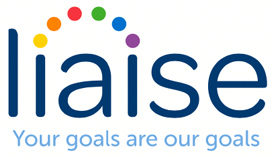What Is Asperger’s Syndrome?
Below we explain common therapies for autism spectrum disorders.
People with Asperger’s syndrome – a form of autism – experience the world differently to other people through their senses. They may struggle with social challenges, emotions, impulses and motor skills defects.
It is a life-long condition and cannot be cured. Autism is a spectrum condition and can affect children and adults in various ways. Some people have complex needs, including mental health problems.
Treatments That May Help
Antipsychotics, stimulants or antidepressants can be used to control anxiety, hyperactivity, depression and attention problems.
Counselling approaches – including cognitive behavioural therapy (CBT), solution-focused brief therapy and psychoanalytic methods – can help relieve anxiety and aid emotional regulation.
Sensory integration is a therapy for Aspergers which helps children regulate their senses. Exercises improve balance and coordination. Those with Asperger’s can find it hard to express feelings: social skills training can help improve communication.
Applied behavioural analysis (ABA) uses positive reinforcement and can be tailored to the person’s unique needs. Anger management programmes can be an important benefit, while support groups provide a safe environment for group work and for practising social skills. Family therapies can help parents to use behavioural training techniques, and neuro-feedback is a biofeedback strategy which can help with brain function control.
Alternative Treatments
Talk to your doctor about complementary therapies, since some may be potentially dangerous. There are various strategies which are popular.
Massage can be calming, while yoga helps you relax, relieves stress and improves flexibility. Chelation therapy is used to remove heavy metals, but it can be dangerous and there is no evidence base.
Hyperbaric oxygen – breathing in a pressurized chamber – is a therapy for Aspergers that may help, but it isn’t scientifically proven. Animal therapy is popular with many children with Asperger’s. Music and art therapy can reduce sensitivity to sound or touch.
Some parents believe Intravenous immunoglobulin (IVIG) infusions can help, and gluten- and casein-free diets are popular. Meanwhile, melatonin, Omega-3 and probiotics are thought to relieve symptoms.
SPELL
SPELL is The National Autistic Society’s framework for those on the autism spectrum. It focuses on five principles of best practice.
Structure
Structure makes the world a safer place. Promoting structured environments can aid autonomy and prevent anxiety.
Positive
Positive approaches and expectations enhance opportunities and communication skills.
Empathy
Those working with children should try to understand their struggles.
Low Arousal
It is important not to overload the senses of those with autism spectrum disorders. Planning a controlled environment is important.
Links
Individuals, families and professionals should keep the lines of communication open.
TEACH
TEACH stands for Teaching, Expanding, Appreciating, Collaborating and Cooperating and Holistic. It focuses on the individual, using visual structures to aid teaching skills, and builds confidence.
Using some of the therapies described here may help to alleviate the symptoms of Asperger’s and improve the quality of life for those affected.





